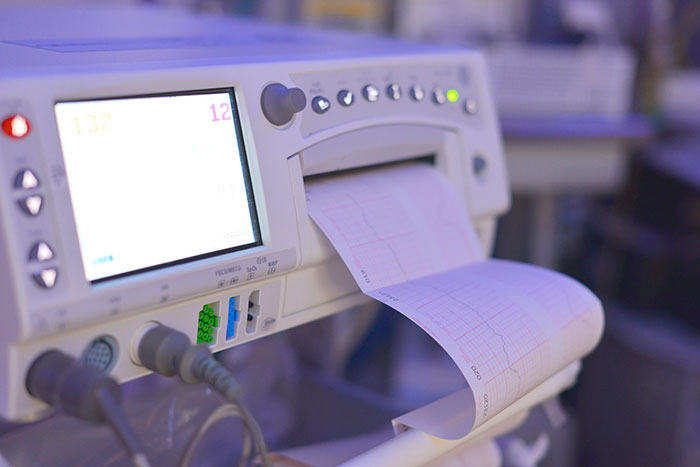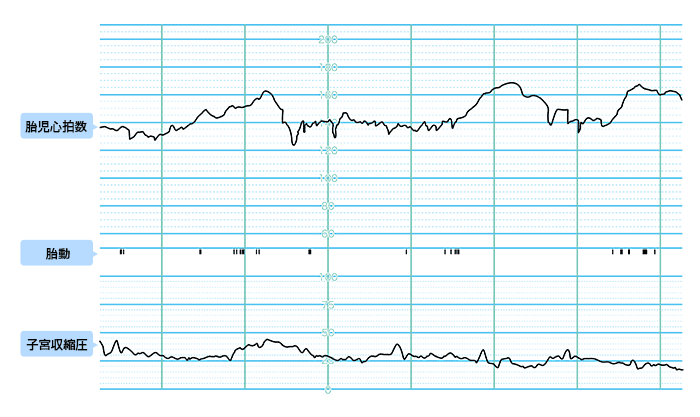How long does it take to do a stress test?

"Non -stress test (NST)" is conducted in the late pregnancy for a pregnancy checkup.Many people don’t know what they are looking at.The non -stress test shows the baby’s condition and the tummy in the baby without putting a load on the mother or the baby in the tummy.Here, we will discuss the purpose of non -stress tests, test contents, judgment criteria, etc. in detail.
- 【table of contents】
- ・ What is a non -stress test?
- ・How to do a non -stress test?
- ・ What is the cost of non -stress test?
- ・ How to judge the non -stress test?
- ・ What if your baby is judged to be fine?
- ·summary
The "Non-Stress Test", which is often abbreviated as NST, is one of the tests called fetal heart rate monitoring, and the baby in the tummy is fine with no tummy.This is a test for evaluating the fetal heart rate.This is to see if the baby can withstand natural delivery.It depends on the maternity hospital, but it is usually done around 34 weeks of pregnancy.
When a non -stress test is performed, over time, the fetal heart rate, fetal movement, and tummy tension will be recorded as a waveform (CTG).
If the baby in the tummy is fine, the baby’s sympathetic nerve will be stimulated and the heart rate will increase when the fetal movement, pelvic examination, or tummy is stimulated.Increased heart rate is a reaction indicating that the baby’s autonomic nervous system in the stomach is normal, so the non -stress test uses the change in the heart rate caused by fetal movements, etc.See whether a waveform called sexual tachycardia is recognized.
The non -stress test is equipped with two sensors that measure the baby’s heart rate and stomach tension on your mother’s tummy.Basically, it is often done in a posture where the upper body is about 30 °, but when the position is difficult, it is a good idea to consult the staff.
The time it takes to test depends on the condition of the baby in the tummy, but it takes at least 20 to 30 minutes.The baby in the tummy repeats a 40 -minute sleep cycle that wakes up for 20 minutes and sleeps for 20 minutes.When the baby is sleeping, it is difficult to see the healthy state, and the measurement time may be longer because the baby is waiting for the baby to occur.
Regarding the cost of inspection, pregnancy and childbirth are not ill, so the pregnancy checkup itself is out of the indication of health insurance.Therefore, the burden is around 2,000 yen.You may be able to use a pregnancy medical examination auxiliary ticket that you can get from the local government, so it is a good idea to check it at the maternity hospital.However, if a non -stress test is required for treatment such as imminent premature birth, insurance will be covered.
The non -stress test is determined from the "fetal heart beats" written in the fetal heart beats, as well as "fetal movement" and "tummy tension".
[Fetal heart beating mine pain diagram]

● How to see the pain diagram of the fetal heart beats
The graph of the fetal heart beats labor diagram has two waves.
The upper row is the "fetal heart beat", the heart rate of the baby in the tummy is displayed in the lower part, and the lower part is "uterine contraction", and the stomach is tension.
What is displayed in the middle "■" is the "fetal movement" displayed when the baby moves.
Regarding the graph of the baby’s heart rate, it is better to be jagged and wavy than a flat state.However, when the baby in the tummy is sleeping, it may continue to be flat because of little movement.If the baby in the tummy is moving up and moving, your heart rate will rise and your jagged will increase, so you can judge that you are fine.This is called a transient tachycardia.
Conversely, when the placenta function is falling or the baby is not well, the heart rate may drop or the heart rate falls down like a valley.Depending on the condition of the baby, hospitalization or emergency caesarean section may occur.
The lower graph indicates whether there is a tummy.If you have a tummy, it will look like a mountain, your tummy will be stronger, and the longer you have, the larger the mountain.You can also determine whether the labor has begun depending on the pace of this tummy.
The baby’s heart rate may drop when the tummy comes or after coming.In such a case, in the case of full -fledged labor, the strength of the tummy becomes stronger, so the baby may be judged to be unable to withstand labor, and may be born in a cesarean section.
If a non -stress test is determined to be in a healthy state, the contraction test (CST) or non -stress test that artificially raises the tummy and sees changes in the baby’s heart rate.Ultrasonic tests are performed together to check the amount of fetal movement, amniotic and fluid, and breathing movements, and the baby in the tummy will be determined.In fact, it is said that less than 50%of the condition is worsening while being judged that the baby is not fine.
A non -stress test that allows you to know the condition of the baby in your tummy is an important test that shows whether the baby can withstand labor or whether the baby is fine.If the baby is judged to be fine, it will be examined in detail by additional tests, etc., which will take appropriate measures according to the condition of the baby in the stomach.In the non -stress test, there is a chance to hear the sound of the baby’s heart in the tummy.It would be nice if you could relax and get a test while listening to the baby’s heart rate.
After graduating from nursing university, he worked as a midwife in a university hospital obstetrics and gynecology ward, and worked as a private university nursing training assistant and a temporary worker at the city hall to write and supervise the Baby Calendar article.Currently raising a child.
